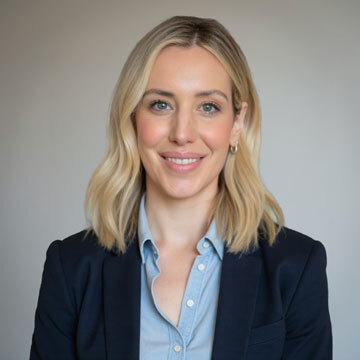


7 Views
1
View In My Room
Photography, Giclée on Aluminum Dibond
Size: 81.3 W x 119.4 H x 2.5 D cm
Ships in a Box
7 Views
1
Artist Recognition

Artist featured in a collection
ABOUT THE ARTWORK
DETAILS AND DIMENSIONS
SHIPPING AND RETURNS
This is an abstract-minimalist photograph of an empty shop window on the outskirts of Hanover, Germany. If you look closely, you can see many different structures and surfaces in the picture: Glass, painted metal, wood, foil, rust. In my photographic work I am inspired by painters like Mondrian (hi...
Year Created:
2020
Subject:
Mediums:
Mediums:
Photography, Giclée on Aluminum Dibond
Rarity:
Limited Edition of 3
Size:
81.3 W x 119.4 H x 2.5 D cm
Ready to Hang:
Yes
Frame:
Not applicable
Authenticity:
Certificate is Included
Packaging:
Ships in a Box
Delivery Cost:
Shipping is included in price.
Delivery Time:
Typically 5-7 business days for domestic shipments, 10-14 business days for international shipments.
Returns:
The purchase of photography and limited edition artworks as shipped by the artist is final sale.
Handling:
Ships in a box. Artists are responsible for packaging and adhering to Saatchi Art’s packaging guidelines.
Ships From:
Germany.
Customs:
Shipments from Germany may experience delays due to country's regulations for exporting valuable artworks.
Need more information?
Need more information?
Guido Klumpe
Germany
The internationally successful and visually impaired photo artist from Hanover shows the bizarreness and hidden beauty of our cities. Guido Klumpe's work moves between street and abstract architectural photography. The photographer composes his images in urban spaces and in such a minimalist way that they puzzle the viewer.“ URBANITY He uses what cityscapes have to offer: Shapes, surfaces, colors, reflections, light and shadow. To achieve this, the photographer is on the move a lot, especially in bright sunshine. These lighting situations are particularly interesting for him, as this is how he creates his bright colors and strong contrasts. He is particularly attracted to districts that are characterized by functional architecture: Train stations, shopping centers, gas stations and the like. Places where most people either only spend a short time to do something or just pass through. Guido Klumpe elicits a special aesthetic, beauty and poetry from them. In the city, he is surrounded by situations and scenarios that he turns into photographic art. He discovers them in the banal and extracts them from the chaos of the urban environment. "Art is everywhere," he says. Once he has discovered a place with potential, the process of working it out begins for him. He looks for what is not immediately obvious, what contains a story or a riddle. He explores ways of combining different levels, putting elements together and creating something new. "For me, the city is a kind of Legoland." The photographer works with a Fuji X-T5 and constantly changing focal lengths. MINIMALISM For Klumpe, minimalism is not an aesthetic end in itself, but fundamental. He reduces his images to the essentials in order to guide the viewer through angles and directions as well as image planes and to confuse him in places, because the photographer wants to question the way we see with his image design. He is interested in the moment of transition, in which the three-dimensional architecture is abstracted into the two-dimensional by reducing the optical reference points. He uses perspective and point of view to photographically compose the building levels photographically: "I stage with photographic means. I'm like a kind of set designer who turns passers-by into protagonists," he says. This minimalist abstraction sometimes seems somewhat enigmatic and has a background: Klumpe has been severely visually impaired since birth.
Artist Recognition

Artist featured by Saatchi Art in a collection
Why Saatchi Art?
Thousands of
5-Star Reviews
We deliver world-class customer service to all of our art buyers.
Global Selection of Original Art
Explore an unparalleled artwork selection from around the world.
Satisfaction Guaranteed
Our 14-day satisfaction guarantee allows you to buy with confidence.
Support Emerging Artists
We pay our artists more on every sale than other galleries.
